Magical Mostar
Mostar is a little town a few hours south of Sarajevo in the region of Herzegovina. It is probably most famous for Stari Most, literally, ‘old bridge’ which joins one part of the town to the other, over the Neretva river. Build in 1566, it deserves its title, at least until the Croats, inexplicably, destroyed it in the 1990s. They did this after initially being allied with the Bosnians against the Serbs. The bridge has since been rebuilt “bigger and better than ever” and is now an important symbol for the reconciliation between BiH and its inhabitants with different religious persuasions – Bosniaks (liberal Muslims, 48% of the population); Serbs (Orthodox Christians, 37%) and Croats (Catholic, 14%).
I was picked up at the bus station by Majda who runs the hostel in which I spent a fabulous four nights. On the short drive, it became impossible not to notice the large number of ruins throughout the town. I thought it was a lot of ruins, but apparently what remains is only around six percent of the ruins that existed after the war. Mostar has come a long way.
The town is divided by one of the main streets, the front line during the war. Today the Bosnian side of Mostar is the eastern side of this road and the Croat side of Mostar is to the west. This street runs parallel to the river’s west which means Stari Most and the ‘old town’ is on the Bosnians side. Croations are known for their entrepreneurial skills and they have transformed the other side of Mostar from paddocks into a thriving cluster of apartment blocks, shopping centres and bars.
The geographical divide of Mostar today is merely academic. One of the biggest conflicts in recent times has been the feud over beer. Croatian bars have been refusing to serve Bosnia’s pride – Sarajevsko. Even supermarkets on the Croatian side sold only Croatian beer (which is not as good). This has changed only recently: All bars in Mostar must now stock Sarajevsko, however apparently the Croatians hide it in the back of the fridge so if you are a discerning beer drinker, you must be a savvy beer orderer.
Near the main square, (called the Spanish square because the Spanish came and helped Bosnia with the war effort [although according the Majda they didn’t really do much to help]), situated on the Croatian side of the front line is an old bank that looks like ruins. In fact it is an old Communist bank that has been gutted since the collapse. Majda told me that Serb snipers used the building, (which is now known as the sniper building), to aim at Bosnian civilians on the other side of the road. It is possible to walk inside and up the stairs amongst all the debris and assume the view the snipers would have had. It is easy to tell where they would have been positioned at the top of the building, for all the bullet shells that remain in piles up there, much to Majda’s surprise.
The hostel is like a house. It is a house. In fact, it was Majda’s house when she was growing up and she treats you like a host would treat a guest. Despite her family being Bosniak, her house is located on the Croatian side of Mostar. The hostel is, in part, run by Majda’s brother Bata who I met on the second night as he came around to pitch his tour to the unprecedented number of guests that had arrived during the previous days. He holds a day-long tour of Mostar and its surrounds and after being in the man’s company for 10 minutes it was decided I would splash out on the 25 Euros that it would cost to take the tour. Bata is slightly crazy, yet extremely entertaining and as one guest aptly described him: “He is like clown but not clown.” His personality somehow compliments his sister’s reserved elegance and it doesn’t take much to work out that behind his youthful craziness there is quite a lot of experience, wisdom and knowledge. When I offered him some Sarajevsko that I happened to be drinking at the time, he declined. Aware of his innate excitability, he told me that he doesn’t drink, “I was born drunk and now I am stuck with it. Imagine what it would be like if I did drink.” A clown but not a clown – the most attractive of personalities.
The tour was probably more than 10 hours long, however I enjoyed the large majority of it despite conceding early on that there simply wasn’t enough space in my brain for all the information Bata was spitting out. He was more than willing to answer questions that anyone had about the war, of which I had many, which was in contrast to Majda who you could sense had reservations in talking too much about it. Most interestingly, the day was lightly seasoned with Bata’s personal experiences of the war – his unbelievable brush with death and his bemusement as to why some Serbian friends of his would suddenly take to the hills and declare Bata their enemy. He spoke of the 14 years he spent in Sweden, sent away from his home as part of Serbian ethnic cleansing, and how he spent most of that time coming to terms with all the personal issues he had brought with him. He told us that Majda was sent to London for three years.
Not to be out done, when Bata took us to a waterfall somewhere outside of Mostar he informed the nine of us that at least one person on the tour always jumps into the river. The water almost always remains at nine degrees throughout the year, so it wasn’t particularly warm on the day. I initially had no intention of jumping in the river unless someone else did first. When we got there it soon became evident that none of the three other blokes, or any of the five women were going to jump. When Bata looked at me saying something along the lines of how it is mostly Australians that take the plunge, I decided that it probably should be me because someone had to do it. The water was unbelievably cold and I couldn’t get out quick enough. Bata was very happy with me and thanked me for “saving the honour of the tour” before giving me some rakia to warm up. Suitably chuffed, the pain from my apparently perforated ear drum was no match for my inflated ego as I had, in my own mind at least, impressed the ladies and easily assumed the position of alpha male among the men (with the exception of Bata of course).
Four nights in Mostar meant that I became somewhat of a stalwart and had the privilege of becoming privy to the location of the best burek in Mostar. Cooked traditionally on hot coals, this burek is certainly the best non-homemade burek I have ever had. It was Majda who kindly introduced me to the wonderful burek place which is a fair way from the hostel. On the drive there, she would stop and point to a mountain and say, “See that mountain with all the houses at the bottom? During the war the Serbs were at the top of the mountain and would fill [car & truck] tires with dynamite and role them down the into those houses. After the war, none of those houses had rooves anymore.”
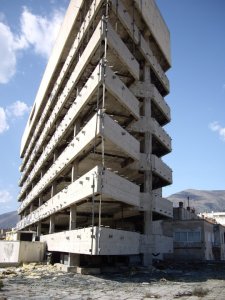



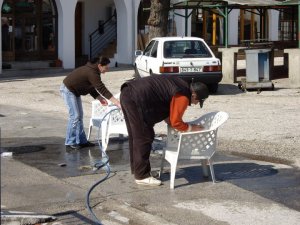
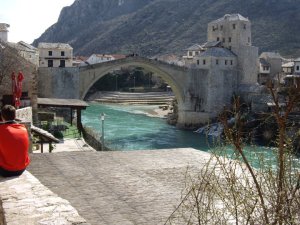

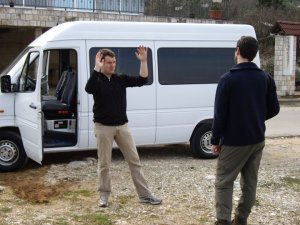

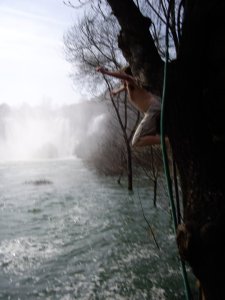
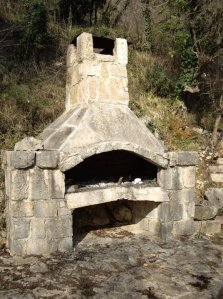
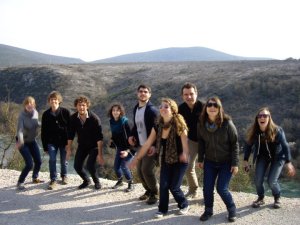


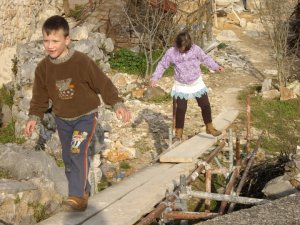
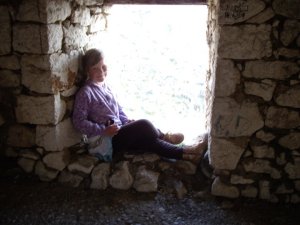

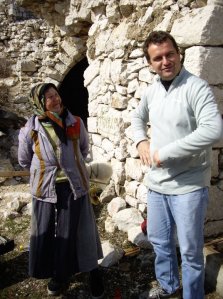
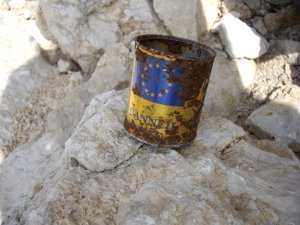
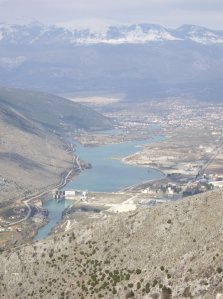
Leave a comment